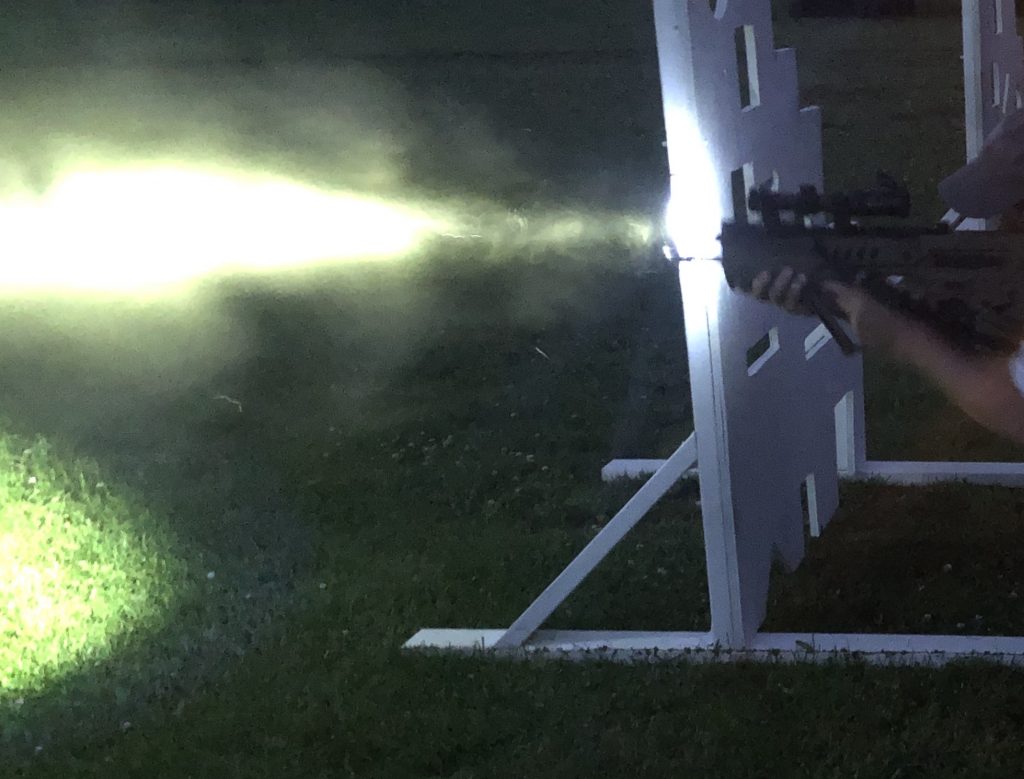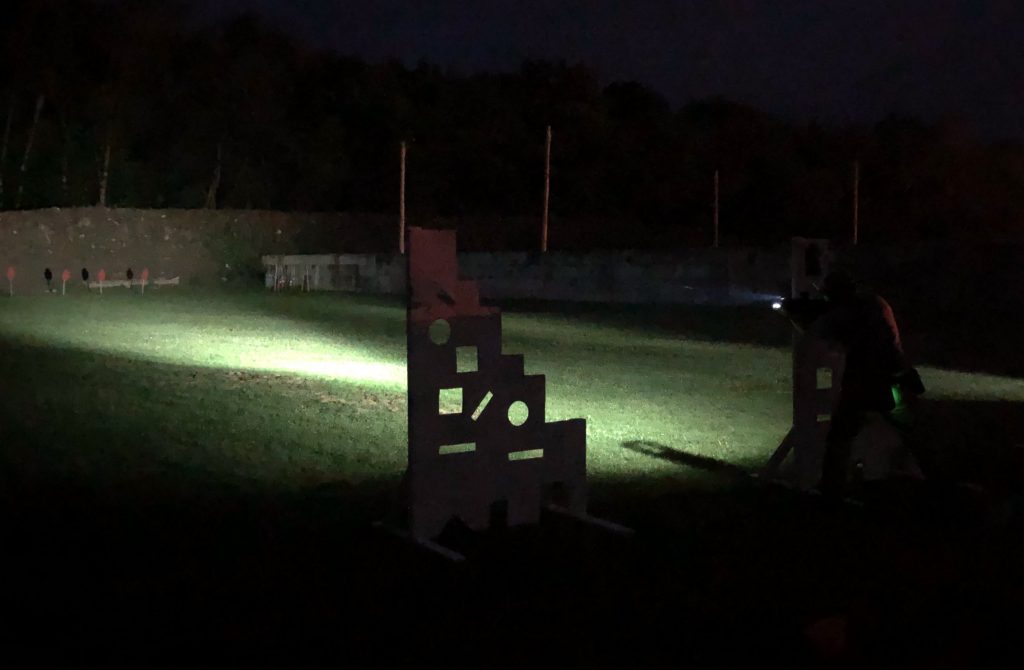Training Day – 2
Remember when I said you get to sleep in? Not kidding. Report time the next night was 1730 (5:30 pm) and we still had 3 hours to run our daylight drills for rehearsal.
Sooooo… We played with one of these instead
After that it was DEET bug spray on, equipment check, and back to work.
Offside Shooting
A myth exists… it goes something like “You can’t shoot bullpups off hand or you’ll eat brass.”
This myth is just that, a myth. The X95 can be shot off hand without eating brass. Doing so as easily as taking just a fraction of a second to hold the rifle correctly. If you “blade” you body (pulling the shooting side shoulder back and turning your body more parallel to the rifle) then you will catch brass off hand. If you shoot in a modern isosceles derived stance with your shoulders squared to the target the brass passes in front of your face.
In the off chance you do get bonked by a round ejecting, it really doesn’t hurt and you have bigger things to worry about.
So we shot right should and then left shoulder… and then more left shoulder… and then even more left shoulder. The transitions between shooting either shoulder smoothed out and we took a break to let the sun set.
“Barrier Blind”
In most contexts when the term “barrier blind” comes up it is in regards to ammunition. It refers to a round that will still do the intended job while passing through an intermediary like glass, drywall, or thin metals like a car body panel.
What I am currently referring to is changing how we usually use cover so that our barrier doesn’t blind us.

Examine the photo.
Note the position of the light on rifle and how it is ‘splashing’ up and off the barrier. In this particular picture the shooter is right on the edge of being too far back from the covering object and catching splashback. Additionally note the amount of smoke coming from the “smokeless” powder, an environmental barrier brought on by the high humidity and temperature below the dew point.

This photo shows use of cover in the dark. You see no light coming back from the barrier onto the shooter, wasting light that should be going down range, would splash and illuminate the shooter further, and would further hurt your vision. You utilize different body positioning than daylight use of cover, there are more factors coming into play with an additional piece of equipment (light) being used. The largest difference is being closer to the object so the light fully clears the barrier.
Look further down range. The cone of illumination hitting the ground, that hot spot and how bright that is. Shooting kneeling that hot spot is going to get closer and brighter.
Shooting prone?
Shooting prone is ill advised in most circumstances because of the amount of light being lost immediately against the ground and degrading the shooter’s vision. A situation can dictate a change in that, such as from an elevated position where the ground isn’t a factor, but for the most part prone is out.
ND
A quick note: What’s an ND?
Negligent Discharge. Negligent discharge or an accidental activation of your light is a serious safety concern, one nearly as serious as a discharge of your firearm. While the light won’t go through someone and start an arterial spurt it will kill night vision unexpectedly, give away your position, and spoil any advantages you may have been setting yourself to take advantage of.
Control placements are very important, and a lockout feature on the light that is easily enabled and disabled is desirable.
Wrapping it up
Shooting with white light is a closer quarters and environmentally different situation. T1, T2, and T3 will (during the daylight shoots) be from greater distances and showcase the legs that the little bullpup has. But the darkness is an animal that requires its own time devoted to tackling it. You’ll begin to wrap it all together in T3 but this is a training stack that is well worth the effort to attend.
The complexity and environmental considerations around using a rifle in the dark require training to be done properly. The guidance that IWI Academy provides is just such a place to do that.
So, come on. Have a blast. Run your gun like its meant to be or borrow one to run. Nearly everything in these courses can come back and be worked with every one of your rifles.




